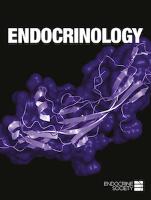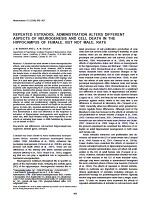Galea, L.A.M.
Person Preferred Name
L.A.M. Galea
Related Works
Content type
Digital Document
Abstract
Gonadal steroids are potent regulators of adult neurogenesis. We previously reported that androgens, such as testosterone (T) and dihydrotestosterone (DHT), but not estradiol, increased the survival of new neurons in the dentate gyrus of the male rat. These results suggest androgens regulate hippocampal neurogenesis via the androgen receptor (AR). To test this supposition, we examined the role of ARs in hippocampal neurogenesis using 2 different approaches. In experiment 1, we examined neurogenesis in male rats insensitive to androgens due to a naturally occurring mutation in the gene encoding the AR (termed testicular feminization mutation) compared with wild-type males. In experiment 2, we injected the AR antagonist, flutamide, into castrated male rats and compared neurogenesis levels in the dentate gyrus of DHT and oil-treated controls. In experiment 1, chronic T increased hippocampal neurogenesis in wild-type males but not in androgen-insensitive testicular feminization mutation males. In experiment 2, DHT increased hippocampal neurogenesis via cell survival, an effect that was blocked by concurrent treatment with flutamide. DHT, however, did not affect cell proliferation. Interestingly, cells expressing doublecortin, a marker of immature neurons, did not colabel with ARs in the dentate gyrus, but ARs were robustly expressed in other regions of the hippocampus. Together these studies provide complementary evidence that androgens regulate adult neurogenesis in the hippocampus via the AR but at a site other than the dentate gyrus. Understanding where in the brain androgens act to increase the survival of new neurons in the adult brain may have implications for neurodegenerative disorders. Part of the "Neuroendocrinology" issue.
Origin Information
Content type
Digital Document
Abstract
Estradiol has been shown to have neuroprotective effects, and acute estradiol treatment enhances hippocampal neurogenesis in the female brain. However, little is known about the effects of repeated administration of estradiol on the female brain, or about the effects of estradiol on the male brain. Gonadectomized male and female adult rats were injected with 5-bromo-2-deoxyuridine (BrdU) (200 mg/kg), and then 24 h later were given subcutaneous injections of either estradiol benzoate (33 μg/kg) or vehicle daily for 15 days. On day 16, animals were perfused and the brains processed to examine cells expressing Ki-67 (cell proliferation), BrdU (cell survival), doublecortin (young neuron production), pyknotic morphology (cell death), activated caspase-3 (apoptosis), and Fluoro-Jade B (degenerating neurons) in the dentate gyrus. In female rats, repeated administration of estradiol decreased the survival of new neurons (independent of any effects on initial cell proliferation), slightly increased cell proliferation, and decreased overall cell death in the dentate gyrus. In male rats, repeated administration of estradiol had no significant effect on neurogenesis or cell death. We therefore demonstrate a clear sex difference in the response to estradiol of hippocampal neurogenesis and apoptosis in adult rats, with adult females being more responsive to the effects of estradiol than males.
Origin Information


